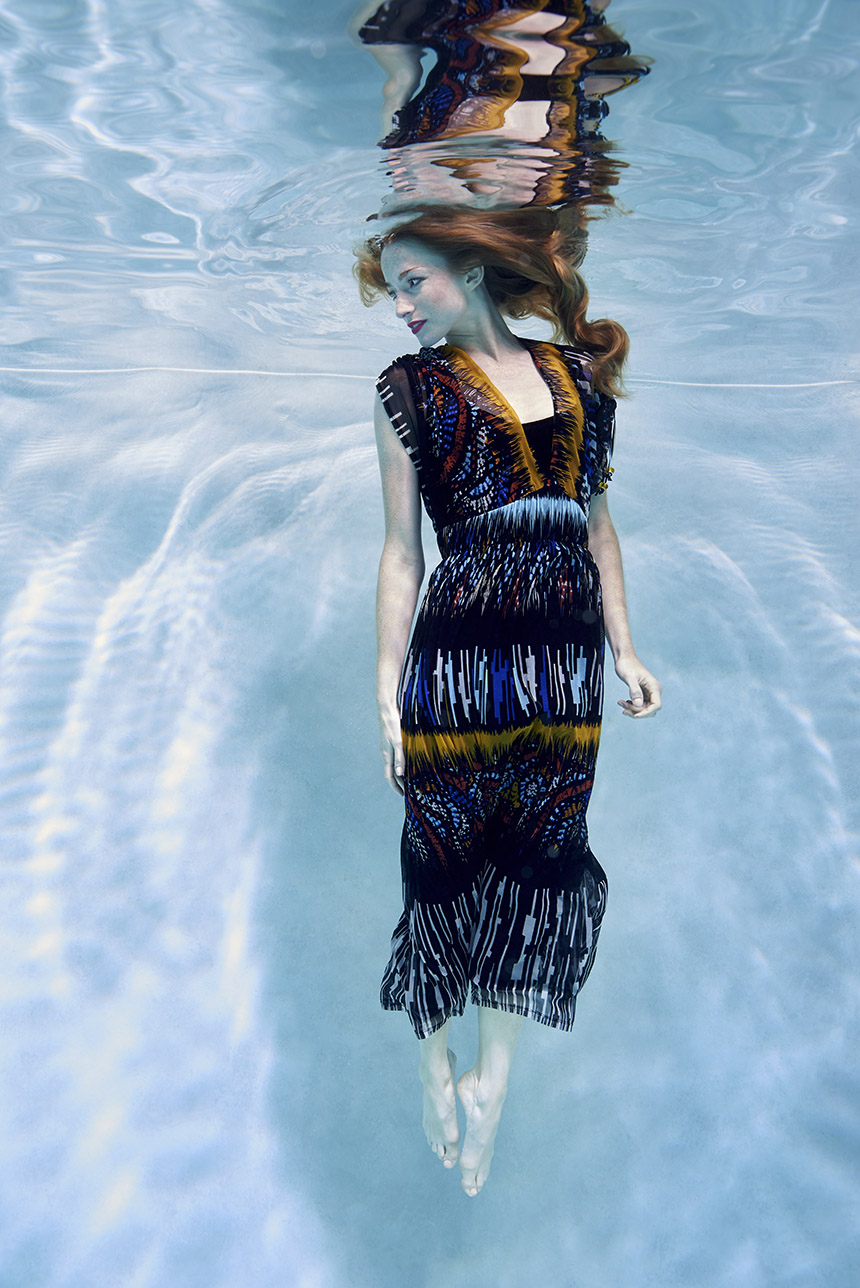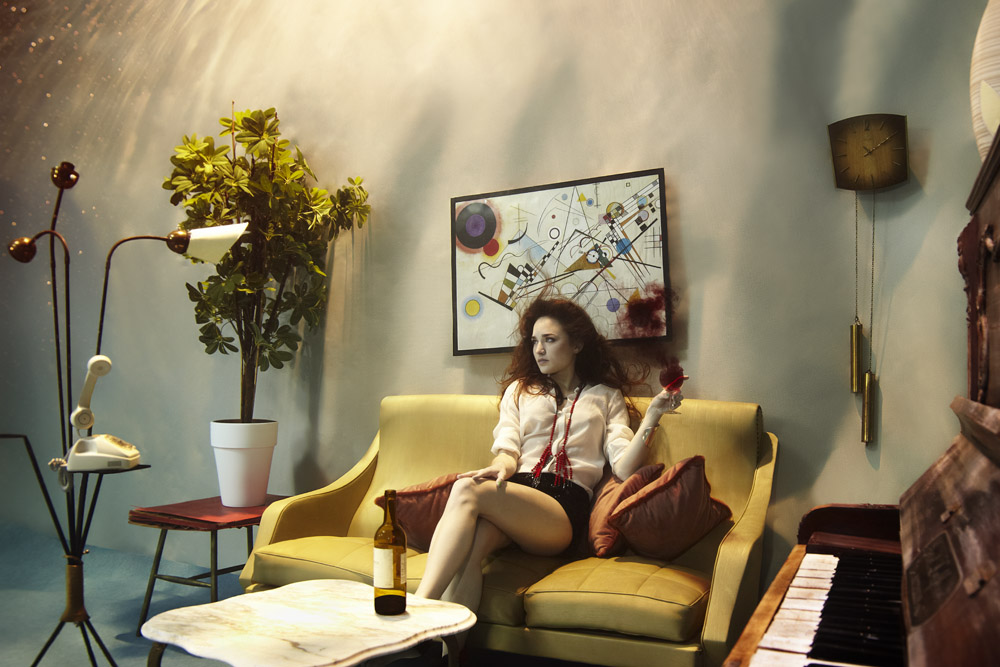Can underwater photography charm fashion designers?
Belgian photographer Harry Fayt specializes in fashion and fine art photography, but he does it underwater. According to him, some designers can stand out with this kind of photography because underwater photos give bigger visibility. ZOEmagazine interviewed Fayt about fashion captured underwater.
How began your story with underwater photography?
Well when I started it was with water babies and it was not a great technical success I have to admit, so I started practicing with friends in private pools and designer friends asked me to take images for them. Step by step developing my techniques I did many fashion shoots. In 2011 i was asked to shoot nude models by an Ukrainian glamour model agency. And a new era started.
After a while I wanted my photography to be more conceptual and tell more stories. So I launched “Modern Icons”, a remake of big art themes, bringing these themes back to modern times.
In 2013 after I photographed the Belgian singer Typh Barrow underwater with the piano I wanted to continue this series. I named it “Heart made in Belgium.” In this series I shoot Belgian artists that I like to help spread the Belgium vibe in the world. These two series are still in progress and will end with a big show.
These days photoshoots underwater do not surprise the world. What is special about your pictures ?
Water is my best assistant, it always works for my best. The best parts of images often happen unexpected Like the wine effect in the picture with the glass of wine as it’s spreading like a cloud in front of the model. I discovered this effect when I was having fun in a pool and a glass of wine fell in to the water. I noticed how the red liquid spread and that gave me the idea to do this in a shoot, and I could use it again and again with other colors. Elements like this are numerous underwater and helps you to build your images.
So I avoid the easy way and always research further. I also use special effects that often come unexpectedly and I can experiment with.
Why would designers like to take a risk to shoot their fashion underwater?
It’s very difficult using designers clothes underwater. All fragile fabrics, like natural silk, will be ruined that’s why you see so few images of this kind. But some designers can like this because they can stand out with this kind of photography and it gives them visibility.
Is it easy to fulfill customers wishes?
I worked mainly for designers and editorial but when It’s a brand if they don’t care to ruin the clothes it’s not a big problem but when it comes to editorial we are very limited because the press office from whom we borrow the clothes want to have them back in a good state.
I guess it’s different for big magazines like Vogue. When working directly with brands it’s different. I worked with Didier Parakian and Wacoal, which is pretty easy, because they provide the clothes, they can be a little bit picky for the editing but I always provide what they want. Mostly it’s a question of time and budget.
Can all clothes can be shot underwater?
Fragile fabrics can be a problem, but honestly my stylist is in charge of that. So many factors play a role. For my personal shoots I test prior to the shoot, but I do focus on stuff I know works underwater. And to be honest I am not in charge that’s why I work with stylists on fashion shoots. I can photograph all clothes but there can be a risk they will be ruined afterwards. But fashion designers know there materials.
What are the main risks about photoshoots underwater? Last year Olivia Ku, Taiwanese model drowned during an underwater photo shoot. Aren’t you frightened away after these accidents?
Not at all, I am shooting in a pool and my security diver is literally next to the model. Security is the number one priority. I don’t like to shoot the so called underwater models, I just have regular models and they have a special training with the diver prior the shoot to teach them how to behave in water for the photos. This because I don’t want to be limited artistically I don’t want to be limited by people’s underwater skills. Everybody can do it with a small training.
Is it difficult to start a career in the field of underwater photography?
It can be difficult, the commercial underwater market is so small that you can’t make a living out of it. But I was shooting mostly for pleasure, and people were seduced by my work that lead me to galleries, so a brand new perspective came up for me. I can shoot exactly what I want to shoot and make a living out of it. I wouldn’t say it is easy at all, but it’s pure happiness.
Do you find a lot of competitors in this field and how do you try to stand out from them?
If you only do commercial photography it is difficult but if you also do Fine Art it is different. But competition reminds you to not fall asleep and always go further and find new concepts.
Now that I am mainly in the Fine Art Scene, competition is no longer a problem. It’s all about how you feel about a final image. I do face facts like a gallery loving my work but telling me they already work with an artist who also works with water. And when magazines do an underwater editorial for summer, they will not do one the next year.
What still fascinates you about underwater photography?
What fascinates me about underwater photography is that everything has to be done. When I started in 2008 all underwater photo’s I saw where so cliché, I thought I could bring something else.
For me everything that is shot above the surface can also be shot below, It gives a total different dimension to the scene, I love the surrealism and the serenity you can feel while looking at the photograph.
Every shoot is a new experience and you never know what is going to be wrong that time.. It can be a technical problem with a connection of one of all the cables we use, it can be the electricity of the pool what shuts down because of light overuse, a sofa can color the pool green because of the reaction with the chloride, a model thatcan’t deliver what i want underwater, we constantly need to adapt ourselves. And there is no manual for that so it’s all about experience and testings. It can be very stressful but I feel so good when I succeed.
 Photographer Harry Fayt
Photographer Harry Fayt






No Comment